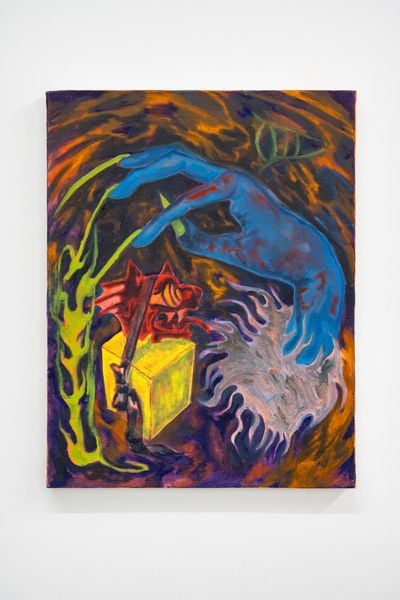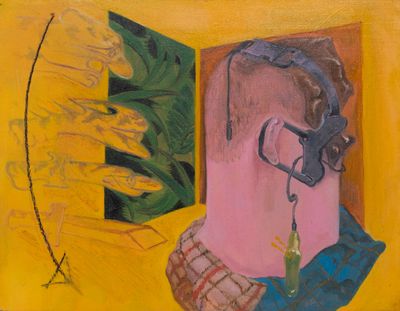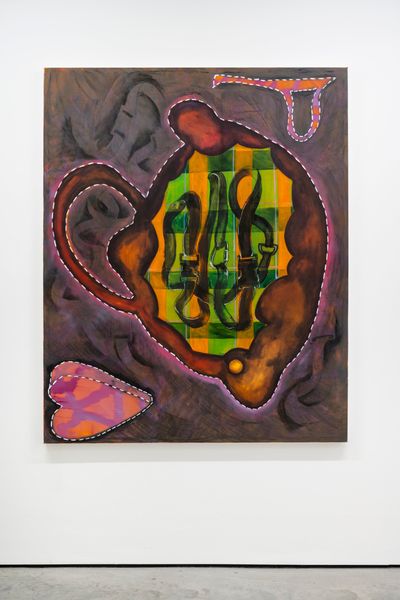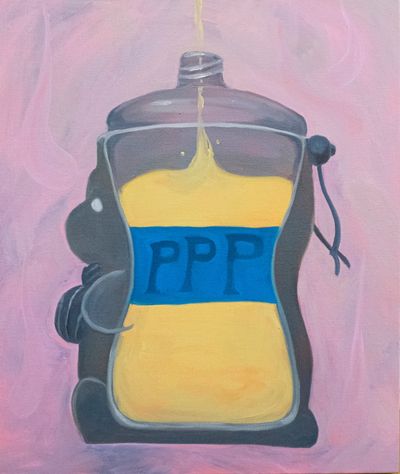
Featuring plush animals, writhing hands, and human bodies in bondage, KAITO Itsuki's recent oil paintings in The Monopolistic Sweet Spots at MAMOTH, London, expands her ongoing exploration of identity and selfhood (7 December-14 January 2023).
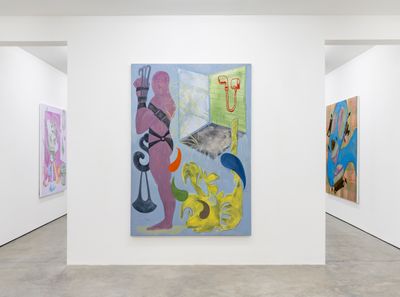
Itsuki's artistic process begins digitally, with the drawings she makes on her iPad. 'But canvas has infinite dpi,' she says, describing the easy transition from the iPad to a physical canvas. Visible brushstrokes and textured surfaces produce an effect of rawness in Itsuki's paintings, reflecting her belief that the painted image will never be as precise as a digital work on the screen.
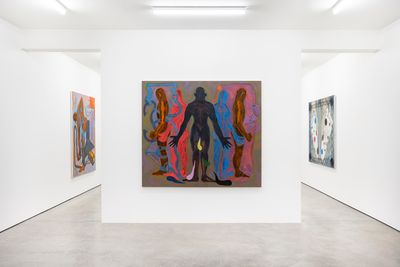
Exhibition view: KAITO Itsuki, The Monopolistic Sweet Spots, MAMOTH, London (7 December 2022-14 January 2023).
KAITO Itsuki, Amazones and Bijous (in a box) (2021). Oil on canvas. 41 x 32 cm.
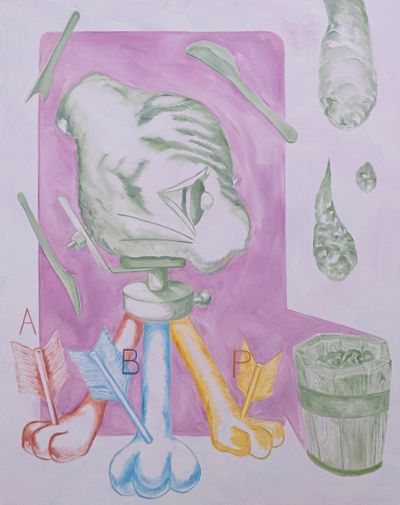
KAITO Itsuki, Tiger Poet (Matter Material) (2022). Oil on canvas. 160 x 130 cm.
Even with the acceptance of all three states, however, self-discovery may not be granted-an arrow penetrates each paw, and sharp tools and excrement rain on either side of the tiger head, challenging its equilibrium.
KAITO Itsuki, Tight Intelligence (head gear) (2021). Oil on canvas. 41 x 32 cm.
KAITO Itsuki, Inside of tameness (Dolphin bag and heart) (2022). Oil and charcoal on canvas. 160 x 130 cm.
Despite the apparent duality of her stuffed animals, Itsuki does not pass judgement on them nor is her work a critique on false appearances. Presented in cross-sections, Inside of tameness and Petz recall X-rays or medical illustrations, whose function is to simply show what is. What we present to the world and what we feel inside are bound to be different; both, nevertheless, are parts of our individual selves.
KAITO Itsuki, Petz (Yellow in Sea otter bottle) (2022). Oil on canvas. 53 x 45cm.
One's experience of the self is a uniquely private experience in The monopolistic sweet spots (Effects of stimulates) (2022), depicting a human leg in vibrant blue against an orange-and-green chequered background. Combs of various sizes and shapes brush against the leg, conjuring a physical reaction. Itsuki renders every point of contact anatomically, with tissues and veins, suggesting the specificity of bodily encounters-consisting of subjective feelings and sensations-that are unknowable to others.
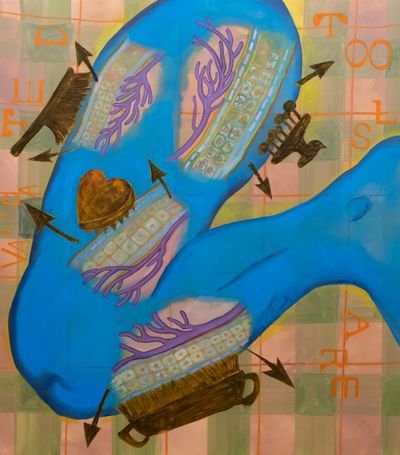
KAITO Itsuki, The monopolistic sweet spots (Effects of stimulates) (2022). Oil and charcoal on canvas. 180 x 160 cm.
Itsuki's work hangs between the imaginary and real worlds, bringing together elements that feel disjointed to reflect on the totality of the human mind. It is an untethering and rebuilding of identity through unsettling, yet recognisable, self-discovery. -[O]
By Gabrielle Leung
London, 14 December 2022
Read the original article through the link:
KAITO Itsuki's Expansion of the Self at MAMOTH
